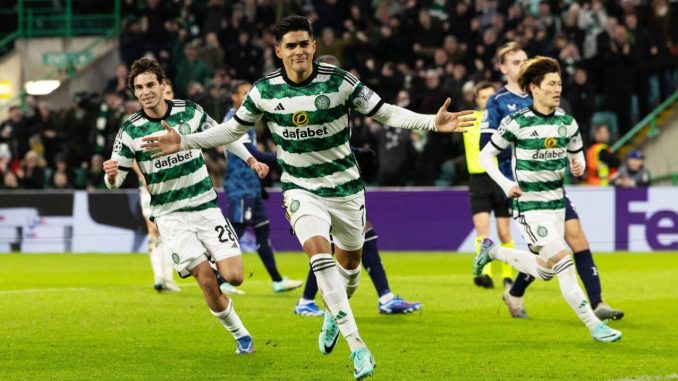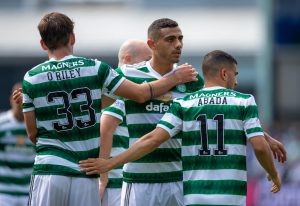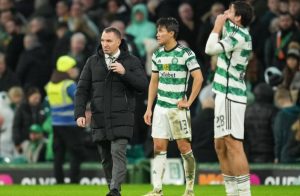
Celtic begin their Champions League campaign against Slovan Bratislava, 60 years after the two teams first met. They met in the 1963-64 Cup-Winners’ Cup, a campaign that saw a number of Celtic European firsts
The early 1960s were unsuccessful for Celtic until the arrival of Jock Stein in 1965, who would shortly bring the Scottish Cup to Celtic Park. Prior to this, the Bhoys had not won a major trophy since their 7-1 League Cup victory over Rangers in 1957.
Celtic initially competed in Europe in the 1962-63 Fairs Cup, losing to Valencia in two legs. However, the next season, Celtic entered the Cup-Winners’ Cup – and for the majority of the competition, it appeared to be more

In September 1963, the Celts faced Basel, a Swiss club. Celtic recorded their first European triumph, defeating Basel 5-1 in Switzerland. In addition, 15,000 fans witnessed John Hughes score the club’s first European hat-trick.
The second leg was as simple. Celtic won 5-0 in Glasgow, despite the fact that they played in front of barely 8000 fans who were turned off by the bad weather and the idea that the contest was over. This was Celtic’s first home European victory, as well as the club’s first clean sheet (kept by goalkeeper Frank Haffey). Celtic advanced to Round Two after winning 10-1 on aggregate.
In Round Two, Celtic met Dinamo Zagreb, whom they will face in the Champions League this season. The Yugoslavs had advanced to the 1963 Fairs Cup final, therefore this was expected to be a difficult match. In actuality, Valencia, Celtic’s conquerors, won the competition. Despite their pedigree, the Celts won 3-0 at home in December 1963 in front of 42,000 people.
Despite the large lead, the tie had not yet ended. Later that month, Celtic headed to Zagreb. Celtic established an early lead in a fairly quiet stadium (10,000 fans out of 60,000 seats), giving them a significant advantage. Although Zagreb finally came back to win 2-1, the Bhoys were comfortably through with a 4-2 aggregate.
Celtic were drawn in the quarterfinals against Slovan Bratislava. The home leg was played first, in February 1964, with 53,000 people cheering for the Bhoys. Bobby Murdoch’s second-half penalty gave the Bhoys a narrow edge.
One Bratislava player did not play in this match, although he later had a significant Celtic link. Of course, in 1998-99, midfielder Josef Venglos would take over as Celtic manager. Signing players like Lubo Moravcik and Johann Mjallby was arguably his most significant contribution, however Bhoys supporters will always remember thumping Rangers 5-1 at Celtic Park.

Bratislava thought Celtic’s narrow victory could be easily reversed and looked forward to the second leg. Celtic faced an early 1.30pm kickoff in March 1964 because the home team did not have floodlights. However, the 30,000 Czech fans were left disappointed after a late John Hughes goal ended the tie and advanced Celtic to the semi-finals.
In the semi-final, Celtic faced MTK Budapest. Following the first leg, it appeared that the Celts may pack their bags for their first European final. On April 15, 1964, Celtic defeated the Hungarians 3-0 in a one-sided match. It appeared to be game over.
Celtic went to Hungary in a buoyant attitude, eagerly looking forward to their final journey to Brussels. However, their overconfidence proved to be their undoing, as calamity struck, bringing European ambitions to an end. The Bhoys were completely outplayed, losing 4-0 and exiting Europe on aggregate.
When the final was contested in Brussels in May 1964, Celtic could only watch on in dismay. If they had made it to the final, the Bhoys would have faced Sporting Lisbon, from which Celtic would later win the 1967 European Cup. Sporting finally defeated Bratislava in the final, but only after a replay.
Celtic went to Hungary full of confidence, eagerly looking forward to their final journey to Brussels. However, their overconfidence proved to be their demise, when calamity struck, ending European dreams. The Bhoys were completely outplayed, losing 4-0, and were eliminated from Europe on aggregate.

When the final was contested in Brussels in May 1964, Celtic could only watch in dismay. If they had made it to the final, the Bhoys would have met Sporting Lisbon, the city where Celtic would eventually win the 1967 European Cup. Sporting defeated Bratislava in the final, but only after a replay.
Celtic’s first true run in Europe came so close to championship gold, but they fell short. This season, the Celtics aspire to have a greater influence in Europe than in previous years. They can begin by repeating the 1963-64 season, defeating Bratislava and Zagreb.
Celtic’s first true run in Europe came so close to championship gold, but they fell short. This season, the Celtics aspire to have a greater influence in Europe than in previous years. They can begin by repeating the 1963-64 season, defeating Bratislava and Zagreb.
Leave a Reply